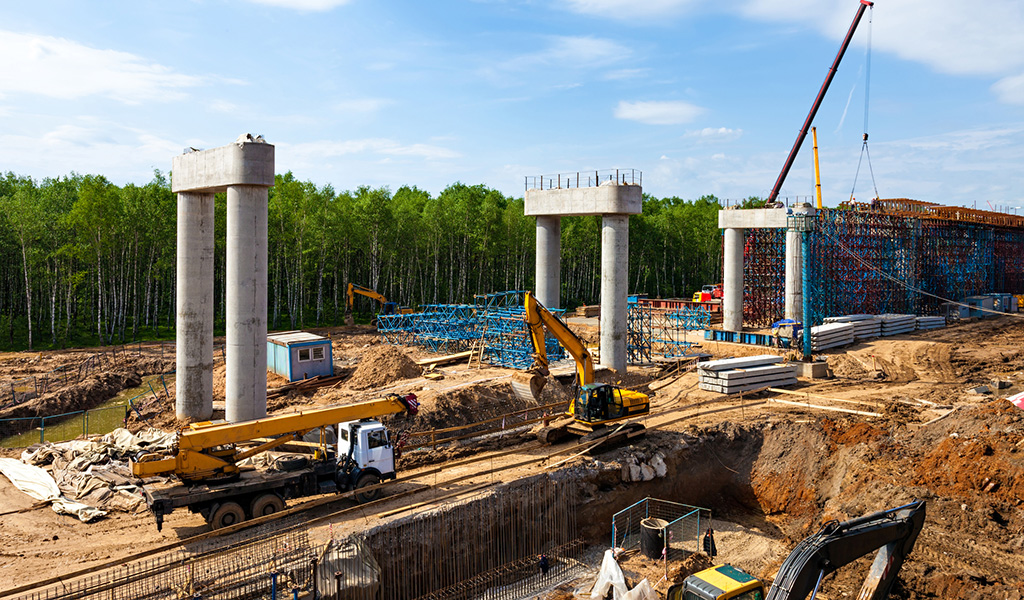



Undeterred by a pandemic, fiery elections, disruptive supply chain issues, crippling labor shortages and worrisome inflation, the North Carolina construction industry is still going strong, outperforming most other states in the nation.
North Carolina’s construction market, in particular The Research Triangle area anchored by Raleigh, Durham and Chapel Hill, was not hit as hard by the Covid-19 pandemic as other cities in the Southeast1, growing 6% over the last two years, according to a Q1 2022 construction market analysis by international construction consulting firm Cumming.
Construction activity accounted for $28.7 billion, or 4.38%, of North Carolina’s 2021 gross domestic product (GDP) of $655 billion, according to data from the U.S. Bureau of Economic Analysis. The boom is attracting construction firms to the state, although reports about the number of construction firms in North Carolina vary from as many as 52,000 per Dun & Bradstreet to about 23,000 as reported by the Associated General Contractors of America (AGC).
On a national level, U.S. construction spending in March reached $1.73 trillion, up 0.1% from the previous month and 11.7% higher than in March 2021, mostly driven by private residential construction spending, the AGC reported in May. Nonresidential construction spending rose 8.5% above March last year.
The American Institute of Architects estimates that nonresidential building construction will increase by 5.4% in 2022 and by 6.1% in 2023.
In spite of ongoing supply chain and labor challenges, North Carolina’s contractors are optimistic, expecting demand for a variety of projects to increase in 2022, according to an nationwide industry survey released in January by the AGC and Sage, a construction managing and accounting software based in Atlanta2.
In North Carolina, 82% of surveyed contractors said they plan to increase their workforce this year, while 4% expect reductions, and the remaining 14% see no change ahead. The labor shortage is affecting most construction companies, with 86% of those surveyed stating that they’re having a hard time filling some or all positions. Almost all of the contractors, 96%, said they are increasing wages, improving benefits and/or offering incentives to attract workers.
In addition to more expensive labor, contractors are facing higher material costs. Of the contractors surveyed, 89% said that costs have been higher than they anticipated, noting that supply chain issues are inflating costs and leading to project delays.
U.S. contractors are most optimistic about federal construction projects, such as highway and bridge construction, as well as transportation (transit, rail, airports) and water and sewer projects, AGC reported. These market segments should benefit from the recently passed Infrastructure Investment and Jobs Act, which, among other things, will invest $110 billion in funding to build and repair roads, bridges and rails. Contractors also are upbeat about construction growth in private sector categories such as warehouses, hospitals and healthcare facilities (clinics, testing facilities, medical labs), as well as manufacturing and multifamily residential construction.


Like companies in other industries, construction firms continue to grapple with labor shortages as the pandemic-altered workforce landscape evolves. Attracting workers seems more difficult than ever, and thousands of job openings go unfilled every month.
The lack of workers—resulting from both the pandemic and the ongoing skills gap caused by the spread of digital technology in construction—negatively affects this labor-intensive industry, causing project delays, reductions in scope, losing bids and, in some cases, cancellations.
As of March 2022, the U.S. construction industry employed 7.6 million workers and had 415,000 job openings and a 4.6% unemployment rate, according to the U.S. Bureau of Labor Statistics. Most of the workers are construction laborers, followed by carpenters, electricians, operating engineers, other construction equipment operators and construction managers.
With about 174,000 workers, North Carolina is one of the top construction employers in the U.S. Following are the top 10:
Source: U.S. Bureau of Labor Statistics, May 2021
As we move into 2022, adopting innovative supply chain, talent acquisition, and inflation-coping strategies will be key for the North Carolina construction industry in order to continue to thrive as it has in recent years.